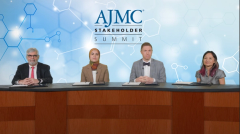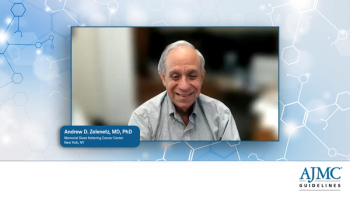
Cost and Time Benefits of Interchangeable Biosimilars
Kimberly C. Chen, DO, MSHLM, discusses the potential benefits of interchangeable biosimilars to patients and payers.
Episodes in this series

Ryan Haumschild, PharmD, MS, MBA: Now we’ve defined interchangeability. Let’s discuss the potential value of these agents, to our patients, payers, and providers in the treatment of inflammatory diseases. Dr [Kimberly] Chen, you can’t start interchangeability and biosimilars without a strong payer perspective. What are some of the potential benefits of interchangeable biosimilars to patients and payers? If you could speak more from the cost perspective and timeliness?
Kimberly C. Chen, DO, MSHLM: By implementing the interchangeability for the biosimilar, there is definitely a significant decrease in the improvement of the medical cost, as well as accessibility for the member and then timeliness in receiving the medication for the patient. For example, if we look at the US there currently are 37 FDA-approved biosimilar medications. Meanwhile, only 22 have reached the market in the United States. On the other hand, I think that Dr [Jonathan] Kay had mentioned earlier in error, there are actually 79 biosimilars, that have been approved. And most of those have been marketed. And they have a significant amount more savings compared to what the US has. In 2018, the US only reached about 9% of our targeted $1 billion savings. And in the US there are only 2 health care systems that have mandatory interchangeability, which is VHA [Veterans Health Administration], as well as Kaiser Permanente. Just by implementing that interchangeability, they have an improvement of 80% in adherence compared to an average of 3.2%. So, again, just implementing that interchangeability can significantly improve our medical costs as well as adherence and timeliness for the patient to get their medication.
Jonathan Kay, MD: If I can just interject, the benefit of an interchangeable biosimilar by nature of the way that interchange occurs is that there’s definitely a cost advantage because if there’s no cost advantage, then there would be no interchange. So a pharmacist can substitute the interchangeable biosimilar for its reference product, if it’s less expensive and if there’s a cost savings. But they wouldn’t substitute it if it was more expensive. So you’re only going to see interchange, theoretically, at least if there’s a cost savings.
Transcript edited for clarity
This activity is supported by an educational grant from Boehringer Ingelheim.
Newsletter
Stay ahead of policy, cost, and value—subscribe to AJMC for expert insights at the intersection of clinical care and health economics.













































